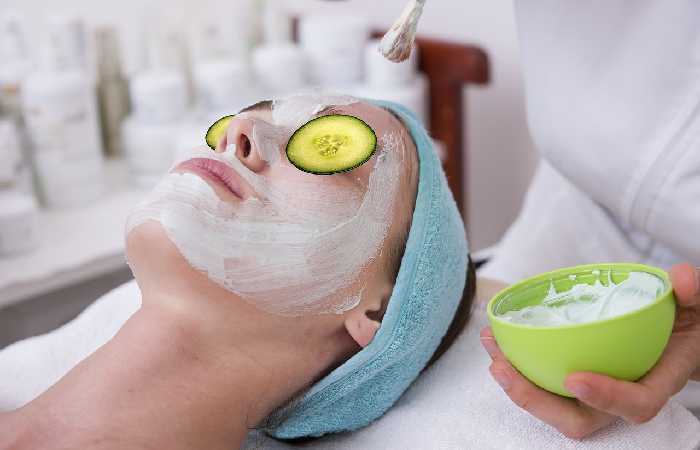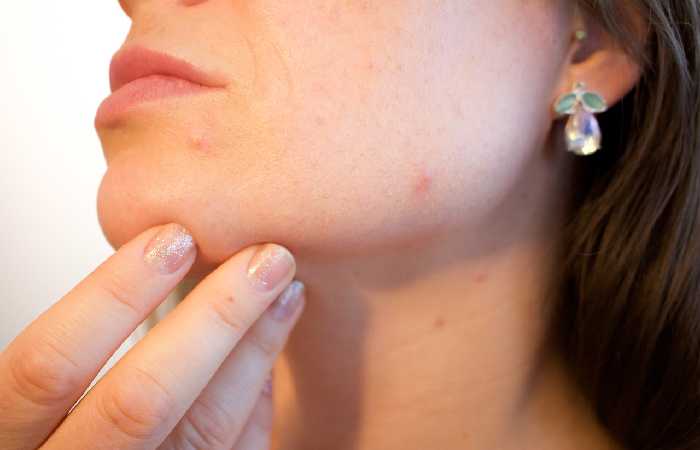Table of Contents
Introduction
Glossary for Skincare: The ingredients, technology and vocabulary of skin care are sometimes complex, especially when the arrival of novelties on the shelves is permanent. To choose authentic products for your skin and its needs, it is essential to know specific keywords.
By knowing what you’re looking for and the meaning of each word, you’ll better manage your skincare routine and the products you’ll apply to your face. Here is the meaning of some terms commonly used in skincare and the role of certain ingredients.
Exfoliation: Nothing to Panic About
If a product is exfoliating, it contains small complex elements (such as sugar) that remove dead skin on the surface by friction or acids (LHA, AHA or BHA) that promote the renewal of skin cells. Glossary for skincare in the first case, let us speak of mechanical exfoliation.
The second of chemical exfoliation. If the word “acid” startles you, know that this chemical compound is used for skin treatment. And when used correctly, it is very effective in gently exfoliating the skin. The mission of exfoliation is to rid the top layer of the skin of its dead or damaged cells to reveal new and fresh skin.
A treatment containing LHA, such as the Age Perfect Cell Renewal facial serum with LHA from different brands, is designed to exfoliate facial skin gently. Exfoliation helps reduce brown spots and prevent clogged pores: an essential part of your skincare routine. You should perform it one to two times a week.
Illuminating Ingredients: Essential To Any Skincare Glossary Routine
Whether you want to minimize your brown spots, restore your skin’s radiance or say goodbye to a waxy complexion, you will need so-called illuminating skin care. Often mistaken for simple whitening agents, illuminating products (the good ones) will act at the cellular level, stimulating collagen production and hydration.
Ingredients to watch out for? Antioxidants (vitamin C, peony extract, niacinamide, green tea and resveratrol) and acids (such as glycolic acid). Antioxidants help repair damage caused by external aggressors, such as the sun and pollution while strengthening the skin to protect it from future attacks.
On the other hand, Acids remove dead cells that accumulate on the skin’s surface and mask their radiance. You can use these ingredients individually, but an optimal care ritual will include a product that
combines these ingredients in small amounts to ensure superior results. How to tighten the pores, in other words, refine the texture of the skin
If you have blackheads, pimples or acne, you’ll want to refine your skin. That is, you’ll want to know how to tighten the pores. Refining usually means reducing dilated pores, a skin condition that goes hand in hand with oily skin. Your pores cannot shrink, but you can reduce their appearance by ridding them of excess sebum and dirt with the right products.
Look for clay-based masks, you can find exfoliating & pore-refining cleansing mask, which balances the skin and cleanses it of impurities, including excess sebum and pollution. The result? Fair skin and pores that look tight.
Cell Renewal: A Real Boost Skincare Glossary
How to display a complexion as fresh as morning dew? How do you regain the radiance and luminosity that the skin has lost over time / exposed to the sun or urban pollution? The secret lies in hydration and ingredients like squalane and glycerin. You can find many rejuvenating creams in the market.
What are the most common chemical ingredients in skin care?
Vitamin C is recognized as vitamin C in most cases. According to Éminence Organic Skin Care, it is a common ingredient in anti-aging formulas as a skin-repairing and protective antioxidant as well as a preservative to prevent the deterioration of some cosmetic goods. Avobenzone If you turn the sunscreen bottle over, you might see this chemical component.
Acne:
A pore blocked with debris, dead skin cells, and sebum is the cause of all acne. Additionally, there are other ways that acne can appear, including whiteheads (also known as closed comedones), blackheads (also known as open comedones), and cystic acne (occurring more profoundly in the skin). Inflamed red, painful, and swollen acne indicates that bacteria also contribute to the condition.
Active ingredient:
In general, an active ingredient is an ingredient in a skin-care product that’s doing the object you want the product to do. The active component in an acne cleanser might be anything like salicylic acid or benzoyl peroxide. The substance may or may not be listed in a drug facts box, and the creation may or may not be regarded as a drug rather than a cosmetic, depending on how the claims are expressed on the label.
Alpha hydroxy acids (AHAs):
AHAs are a sort of chemical exfoliant (see below), making removing old skin cells easier and revealing fresh ones by loosening the bonds holding them together. Two common varieties of AHAs are lactic acid and glycolic acid.
Antioxidant:
Ingredients that help neutralize allowed radicals (highly reactive molecules in the environment). However, free radicals can damage the skin and possibly cause premature skin aging when the skin’s ratio of free radicals to antioxidants is out of whack.
Ascorbic acid: See “Vitamin C.”
Azelaic acid:
A type of acid synthesized by yeast, barley, and wheat that’s supposed to have a gentle exfoliating effect. According to research, it is helpful in treating acne and pimples that resemble acne, which are a common symptom of rosacea. Both prescription and nonprescription versions of azelaic acid are available.
Beta hydroxy acids (BHAs):
A chemical exfoliant (see below), BHAs loosen the bind that holds skin cells together. Letting them to be easily swept away, revealing new skin cells underneath. An example of a well-known BHA is salicylic acid.
Benzoyl peroxide:
This acne-fighting agent can eradicate the particular strain of bacteria that frequently causes inflamed acne. However, applying a moisturizer and benzoyl peroxide is crucial because it might irritate or dry out the skin.


